The Blueprint Pt 3/3: The CIA’s Global Coup Machine (Today)
Is the US and the CIA still in the business of coups and regime change? From Syria to Ukraine, the answer is yes. You've seen the blueprint in Parts 1 and 2 and now we know what to look for.
Let’s say you don’t buy into the idea that the U.S. is still involved in coups. You believe things like “democracy wins” or “foreign policy is about stability, not control.”
Okay. Fair.
But let’s ask one honest question:
If U.S.-backed regime change really stopped after the Cold War... why does the same pattern keep repeating?
Check out Parts 1 and 2 to catch up:
Because while the uniforms may have changed, the structure—the Gladio playbook—still shows up in country after country.
Let’s look at today’s most unstable regions.
Not through headlines.
Through patterns.
SUDAN: A CIVIL WAR
A brutal internal war between the Sudanese Armed Forces (SAF) and a breakaway paramilitary called the RSF.
It’s easy to think this exploded out of nowhere.
But it didn’t. This was a slow-burn coup years in the making.
The spark? The 2021 military takeover—when Sudan’s fragile democratic hopes were crushed by a council of generals.
At the center of it were two military men:
General Abdel Fattah al-Burhan, the head of the armed forces and Sudan’s de facto ruler.
Gen. Mohamed Hamdan Dagalo ("Hemedti"), leader of the RSF and Burhan’s ambitious deputy.
They shared power—until they didn’t.
What’s actually happening:
This civil war isn’t an accident.
It’s the latest chapter in a long, deliberate strategy that started with the 2019 ousting of Omar al-Bashir—a dictator who ruled for 30 years after his own coup back in 1989.
The U.S. backed the regime change in 2019, hailing it as a "democratic transition."
“The United States strongly supports a peaceful and democratic Sudan…We commend the people of Sudan for their resiliency and their commitment to nonviolence as they express their legitimate demand for inclusive and representative government that respects and protects human rights.”
— Robert Palladino, 2019 Department Press Briefing
Then they watched as the military quietly took over again in 2021.
The RSF? They’re no freedom fighters.
They were born from the Janjaweed militias—the same groups that carried out atrocities during the Darfur genocide.
Today, they get their guns and money from some very familiar places:
UAE, accused of sending arms despite official denials.
Egypt, Saudi Arabia, and maybe—just maybe—tacit green lights from Western intelligence services.
Both the U.S. and the UK wagged their fingers at the UAE in 2024, warning them to stop fueling the conflict.
But actions speak louder than press releases.
Here’s the truth:
Both groups are receiving weapons and funding from foreign governments
Civilian government? Collapsed.
Resource zones—particularly gold—are being carved up and sold off to foreign corporations mid-conflict.
Russia’s Wagner Group (Africa Corps):
Through shell companies like Meroe Gold, Wagner has been smuggling gold out of RSF-controlled areas to fund Russia’s war in Ukraine—often working hand-in-hand with Sudanese military factions.Meroe Gold and Zarubezhgeologiya:
Meroe Gold buys artisanal gold from local markets and smuggles it into Russia via Central Africa; meanwhile, Zarubezhgeologiya (that’s a fun word to say) secured new exploration rights in 2024, even as fighting raged.Perseus Mining (Australia):
This Australian firm acquired the Meyas Sand Gold Project and resumed drilling in 2024—though it’s hedging full investment until Sudan's “viability” stabilizes. Foreign mining rights remain active despite the bloodshed.UAE-Linked Companies (Emiral Resources, Alliance for Mining):
Emirati-owned firms dominate Sudan’s official gold exports, purchasing directly from SAF-held territories.
At the same time, UAE companies have been accused of laundering smuggled RSF gold into global markets—sometimes hidden inside humanitarian aid shipments. (Imagine that!)Artisanal Mining Smuggling:
Around 80% of Sudan’s gold comes from small-scale, unregulated mining. Both SAF and RSF factions fund their war efforts by controlling mining zones and cutting deals with foreign brokers.Egypt’s Role:
Gold from SAF-held areas is increasingly smuggled into Egypt—then often funneled into the UAE—feeding a complex regional gold laundering operation.
No side is clearly pro-democracy. But one will eventually “win,” and that government will be very grateful to the countries that backed it.
Ask yourself this:
If Washington really opposed coups, why hasn’t it frozen aid to Sudan?
Why are U.S. allies bankrolling militias while the State Department offers “deep concern” and little else?
Three volunteers in Khartoum told Human Rights Watch that in the months before the SAF drove the RSF out of the city, RSF fighters raided community kitchens, detained aid workers, looted food supplies, and imposed so-called “protection fees” just to operate.
So, humanitarian aid going to fund the fighters via “protection fees.”
Meanwhile, the SAF wasn't much better—intimidating and arresting volunteers in areas they controlled.
And where are all these guns coming from?
While the U.S. hasn’t openly shipped military aid into Sudan, they haven’t exactly shut down the arms pipeline either.
Sudan’s domestic arms industry keeps humming—and according to the Stockholm International Peace Research Institute (SIPRI), Sudan has imported weapons from Belarus, China, Iran, Russia, Ukraine, and the UAE between 2004 and 2023.
Some of the newest blood on the ground?
Turkish-made firearms in the hands of Sudanese Army units, and Russian and Turkish weapons funneled through arms dealers tightly linked to the SAF, according to Amnesty International.
In case you forgot, Turkey was a Gladio operation.
But here’s a layer you almost never hear about:
Sudan itself has accused the U.S. and the CIA of fueling chaos inside its borders.
Back in the mid-2000s, Sudanese Interior Minister Zubair Bashir Taha publicly accused the CIA of smuggling weapons into Darfur—claiming the agency was trying to disrupt the region’s demographics and prolong the violence.
He wasn’t alone.
Even Sudan’s notorious intelligence chief, Salah Gosh, admitted that while the U.S. and Sudan worked together on "counterterrorism" operations—including spying in Iraq and Somalia—the price was letting Sudan burn at home.
Gosh once bragged to Sudanese media that their cooperation with the CIA “helped avert devastating measures” by Washington.
Translation?
Help us hunt your enemies abroad, and we’ll look the other way while you carve up your own country.
U.S. counterterror partnerships in Sudan weren’t about democracy or human rights—they were about access, leverage, and cutting deals under the table.
This isn’t new. This is the blueprint:
➤ Provoke division
➤ Fund both sides
➤ Let it burn
➤ Back the faction that promises stability—on Washington’s terms
Prediction: The Sudan Playbook
Step 1: Prolonged Chaos
The civil war will drag on — not because peace isn’t possible, but because chaos benefits the real players.
Foreign arms and funding will continue to flow quietly into both sides under the table, while Washington and its allies publicly issue “deep concern” statements and “calls for ceasefire.”
Negotiations will be pushed but deliberately sabotaged when they get too close to real power-sharing.
Step 2: De Facto Partition
Sudan will likely fracture in practice if not on paper.
Key resource zones — gold, oil, possibly water control points — will fall under the private control of whoever can secure them with guns.
Foreign corporations (especially from the U.S., UAE, and EU) will strike contracts with local warlords or “governors” to mine resources, build infrastructure, or establish new trade routes.
In short: Sudan becomes a rent-a-state.
Step 3: Install a "Stabilizer"
Once the bloodshed peaks and international outrage flares up, a “solution” will appear:
One faction (likely Burhan’s SAF, since the RSF is too stained even for media rehab) will be elevated as the “responsible” side.
The media will start painting them as the only hope for stability.
New elections (highly managed) will be proposed.
A “civilian-military transitional council” may be floated to give the illusion of democracy returning.
Spoiler: It won’t be real democracy.
It will be a friendly, pliable government, desperate for international legitimacy, willing to hand out economic deals to stay alive.
Step 4: Reward and Forget
The new regime will receive massive "rebuilding" aid packages from the World Bank, IMF, USAID, and other U.S.-aligned institutions.
Debt contracts will tie Sudan’s economy into long-term dependency.
Gold, oil, and strategic port access (Red Sea) will be quietly locked up by foreign investors under the guise of “recovery partnerships.”
The human rights abuses, war crimes, and massacres?
They’ll be memory-holed under the headline:
“Sudan: A Fragile New Democracy Emerges.”
Just like we saw in Iraq.
Just like in Libya.
Just like in Haiti.
Same machine. Different backdrop.
LIBYA: COUP OF ATTRITION
Gaddafi Origins
In 1969, the U.S. thought Muammar Gaddafi might be manageable. They quickly recognized his government, hoping to protect oil contracts and military bases. But by 1970, he kicked out foreign troops and started pushing for real independence.
Over the next four decades, he’d go from reluctant partner to public enemy.
Gaddafi’s Libya had free housing, healthcare, education—and the highest standard of living in Africa.
But no good deed goes unpunished.
Propaganda painted him as a madman. Terror attacks were pinned on Libya—often with flimsy or manipulated evidence.
When Gaddafi asked to see the proof? They refused.
By the 2000s, he tried to play ball again—dismantling WMD programs and working with U.S. intelligence.
Then he made a mistake. And it got him killed.
In 2009, Gaddafi shared his vision: a gold-backed African currency. A continent free from the petrodollar. A unified telecom satellite system. A sovereign Africa that didn’t need Western bankers or military “advisors.”
Big Mistake.
2011 came around the corner, and with it, the Arab Spring hit Libya. U.S.-funded groups trained the activists. NATO bombed. The rebels moved in. CIA teams were on the ground.
Hillary Clinton laughed: “We came, we saw, he died.”
This wasn’t about democracy. It was about dismantling a sovereign, self-sufficient state—and taking the gold with it.
LIBYA: 2025
More than a decade after NATO "liberated" Libya, here's what freedom looks like:
One (The GNU) is propped up by Turkey—widely regarded in some circles as a regional outpost for CIA operations.
The other (GNS)? Backed by Russia and the UAE.
That's not democracy. That's a proxy war.
Washington says it supports “a unified Libya.”
But let’s be honest.
When was the last time the U.S. truly wanted an independent country managing its own oil?
The U.S. has made no meaningful effort to rein in its allies.
Turkey keeps arming factions.
UAE money keeps flowing.
And through it all, major oil fields stay online—some operated by U.S. contractors, others guarded by foreign mercenaries.
So, let’s ask the real question:
If this was a liberation, why is Libya still divided?
Why are foreign powers calling the shots on who governs what?
This isn’t a failed state. It’s a functioning chaos zone.
A sandbox for empire.
One where sovereignty gets bulldozed and “stability” just means the oil keeps flowing.
In 2015, Donald Trump said something CNN didn’t expect:
Turns out, it looks like he was right.
Because what's left today isn't peace—it’s permanent disorder, managed by global interests.
It’s not nation-building.
It’s nation-breaking.
And business is booming.
Prediction: The Libyan Playbook
Step 1: Keep the War Just Hot Enough
Just like in Afghanistan, Iraq, Syria, and parts of Central America, the goal isn’t always to win the war. It’s to sustain the instability long enough to:
Prevent true sovereignty from forming
Keep natural resources (especially oil and gas) flowing through approved channels
Justify foreign presence (contractors, "humanitarian missions," intelligence operations)
Libya has now been trapped in this gray zone of managed chaos for over a decade. The existence of two rival governments, each backed by different global power blocs, ensures that neither side can fully consolidate power.
And that’s the point.
Step 2: Privatize the Collapse
In every past CIA-influenced regime change—from Chile to Iraq—there’s a gold rush for foreign corporations during the power vacuum.
Here’s how that’s already playing out in Libya:
U.S. and European contractors quietly operate oil infrastructure under "emergency stabilization" agreements.
Private military firms and foreign-trained militias protect corporate assets, not civilians.
Massive reconstruction loans (usually IMF or World Bank) are floated… with heavy strings attached.
In effect: The government may be shattered, but the contracts stay intact.
Step 3: Install a “Technocrat” or Military-Backed Strongman
Eventually, one side will get tired of the chaos—or will lose just enough leverage to accept terms.
That’s when the backroom deal happens.
The “winner” of the conflict (likely Turkey’s side, given CIA ties) will agree to form a “transitional unity government.”
The West will cheer. Elections will be planned. Aid will return.
But the real power will rest with whoever helped secure that victory—whether it's foreign donors, military cliques, or oil companies.
And once the dust settles, what you’ll get isn’t democracy—it’s a client state.
Step 4: Rewrite the Narrative
Finally, the media kicks in.
Once a “stable” government is in place, you’ll see:
Human interest stories about girls returning to school
Economic pieces about Libya’s “post-conflict recovery”
Op-eds praising U.S. diplomacy for brokering peace
Meanwhile, opposition voices will vanish. Corruption will spike. Foreign corporations will lock in 10- to 30-year oil and gas contracts.
Sound familiar? That’s exactly what happened in Iraq. In Afghanistan. In Honduras.
UKRAINE: PSY-OP STATECRAFT
Let’s rewind the tape.
For decades, Russia’s been sounding the alarm about NATO creeping closer to its doorstep. Since the ‘90s, the alliance swallowed up former Soviet states—the Baltics, Poland, Romania—each expansion another brick in what Moscow saw as a Western wall closing in.
Which, by the way, NATO promised never to do.
Then came Ukraine.
In 2008, NATO dangled membership in front of Kyiv at the Bucharest Summit—no date, just a promise. But to Russia, that was enough.
A loaded gun on the table.
By 2014, Ukraine pivoted West, the Maidan protests exploded, and Russia saw red. Crimea was annexed. And in the east—Donetsk and Luhansk—pro-Russian separatists dug in, claiming the Ukrainian government was persecuting Russian-speaking citizens.
The West called it aggression.
Russia called it protection.
What rarely makes the headlines? The Minsk Agreements—signed in 2014 and 2015—were supposed to cool things down: autonomy for Donbas, a ceasefire, and a diplomatic off-ramp for both sides.
But Ukraine didn’t implement it.
And the West? Barely nudged them.
So the fire smoldered. And eventually, it blew wide open.
Russia invaded Ukraine. But if you think that’s the whole story—then you’ve been watching the wrong part of the screen.
Because while everyone’s eyes were on the tanks and trenches, something else was happening backstage.
The real story? It’s not just a war.
It’s a masterclass in 21st-century perception warfare—complete with curated narratives, vanishing opposition parties, “emergency” laws, and billions in Western dollars funneled into a government that now rules with the kind of executive control that’d make a neocon blush.
Here’s what it looks like today:
Elections? Delayed indefinitely. Wartime conditions, you understand.
Opposition parties? Suspended. Some outright banned.
Media? Consolidated under direct control of the Zelensky administration.
Foreign money? Flowing in like it’s Vegas in the '70s—military aid, IMF loans, reconstruction contracts, NGO support… all with strings attached.
The result? A country shattered by war, then reshaped in the image of its donors.
The Narrative Machine
From the get-go, the story was binary—David vs. Goliath. Ukraine = good. Russia = bad. No room for nuance, no space for context, no questions allowed.
If you so much as asked why NATO expansion mattered, or wondered whether the U.S. was playing both sides of the chessboard again—you were a Putin apologist.
Never mind the history. Never mind the CIA’s well-documented involvement in Ukraine since at least the 2014 Maidan uprising.

Never mind the fact that even Henry Kissinger (of all people) said pushing NATO right up to Russia’s border was suicidal foreign policy.
Instead, it was memes, flag filters, and late-night hosts explaining geopolitics between punchlines.
So Who’s Winning?
Well, not the Ukrainian people.
They’ve lost homes, families, their political system, and soon—control of the rebuilding process. Because when this war ends, whenever that is, the real prize isn’t sovereignty.
It’s contracts. Reconstruction. Influence.
American firms, European banks, private security companies—everyone’s already lining up.
You see the pattern yet?
Destroy the old system (or let someone else do it).
Flood the zone with money, media, and advisors.
Build something new—but only with the “right” people at the table.
And those people? Always seem to listen when Washington calls.
If you want read more about Ukraine and Russia, check out these articles:
UKRAINE: The Psy-Op That Fooled The World
How Decades of Nationalist Narratives, Western Influence, and Hidden Agendas Shaped a Geopolitical Battleground.
Villain by Design: How Russia became the Boogeyman of the West
For decades, the dominant Western narrative has painted Russia as the boogeyman—a relentless, power-hungry adversary bent on undermining democracy and spreading chaos. But what if the story we've been told isn't the whole truth? What if Russia is not the bad guy?
Prediction: The Ukranian Playbook
Let’s stop pretending this is just about borders.
This is a proxy war turned state-rebuild—a full-spectrum operation wrapped in blue and yellow flags. And the pieces are already falling into place.
So how does it end?
Not with a bang. Not with a peace treaty on the deck of a warship. It ends the way modern coups do: in suits, press releases, and construction contracts.
Let’s break it down.
1. Ukraine Becomes a Client State in All But Name
The longer the war drags on, the more dependent Ukraine becomes. Not just militarily—but economically, politically, structurally.
And who’s bankrolling it all?
The U.S., EU, IMF, World Bank, and Western contractors—who will expect a return on investment. They’re not rebuilding Ukraine for free. They're rebuilding it in their image, with their priorities on top and sovereignty a few pegs below.
2. Russia Takes What It Came For
Whether people like it or not, Russia will likely consolidate control of the Donbas, Crimea, and maybe more. It won’t look like a win in the headlines, but on the ground? The lines have already moved.
And as much as the West has poured into this war, there’s a limit to how long the checkbook—and public support—will stay open.
So Russia holds the land. Ukraine gets “reconstruction.” And the West gets influence.
A ceasefire happens—not because anyone wins—but because everyone gets something they can spin.
3. The New Ukraine Is Western in Form, Fragile in Practice
Here’s the kicker.
Once the guns stop, Ukraine will be held up as a democratic phoenix—rebuilt, rearmed, and integrated into the Western order.
But underneath?
It’ll be a fractured, debt-ridden country with privatized infrastructure, foreign-managed energy sectors, and a political system beholden to Washington and Brussels.
And if Zelensky isn’t useful anymore?
He’s gone.
Quietly. Elegantly.
Replaced by someone even friendlier to donor interests.
We’ve seen this before.
This Isn’t Liberation. It’s Rebranding.
That’s the Gladio blueprint in action:
Crisis → aid
Aid → influence
Influence → control
Call it support. Call it democracy promotion. But by the time it’s over, Ukraine won’t be a sovereign comeback story.
It’ll be a case study in 21st-century regime redesign.
SYRIA: THE ONCE AND FUTURE COUP
Let’s be real—Syria was always on the list.
Back in the early 2000s, long before protests in Damascus made the news ticker, regime change in Syria was quietly penciled in as part of the neocon fantasy lineup—right next to Iraq and Iran.
Why? Pipelines, power, and proximity to Israel.
Syria was aligned with Iran. It supported Hezbollah. And most threatening of all? It was sitting in the way of proposed Qatar-to-Europe gas pipelines—a project that would've undercut Russia’s energy monopoly and flooded the EU with U.S.-allied liquefied gas.
So Washington started saying, "He’s got to go."
Arab Spring, CIA Playbook
When the Arab Spring hit in 2011, the U.S. seized its moment. Protests in Syria turned into an armed uprising almost overnight.
But this wasn’t organic.
It was NGO-fueled, foreign-funded, and intel-guided.
The White House started pumping money through back channels—training rebels, funding media narratives, and unleashing the same Gladio-adjacent assets used in Libya and Ukraine.
According to documents and whistleblowers, the CIA ran a $1 billion covert operation—code-named Timber Sycamore—to arm and train “moderate rebels.” In reality, those rebels ended up forming the backbone of ISIS and al-Nusra.
But hey—collateral damage, right?
Hillary’s Blueprint: Regime Change First, Questions Later
And here’s the kicker: Hillary Clinton told us what was supposed to happen.
“The failure to help build up a credible fighting force... left a big vacuum, which the jihadists have now filled.” — Hillary Clinton, The Atlantic, 2014
Translation? We were supposed to back the rebels harder. The plan was to crush Assad quickly and put a U.S.-friendly government in place—just like in so many other coups.
If Hillary had won in 2016, she made it clear: she was going to war.
Trump didn’t follow that script. He stopped short of full-scale intervention—and the regime didn’t fall.
So Why Did the U.S. Want Assad Gone?
Let’s connect the dots:
Assad blocked the Qatar-Turkey pipeline, protecting Russian gas dominance in Europe.
He was friendly with Iran and Russia—two enemies of U.S. foreign policy.
He refused to become another petro-puppet.
And he was sitting on a prime piece of geostrategic real estate.
In the Gladio model, that’s a death sentence.
Where Are We Now?
Syria’s in ruins. Millions displaced. Whole cities flattened.
Assad is still standing (albeit on Russian soil)—but the war did its job.
Infrastructure? Shattered.
Oil fields? Contested.
Proxy forces? Still active.
Pipelines? Green-lit two days after the fall of Assad.
The U.S. maintains a military presence in northeastern Syria (though its decreasing now), guarding oil infrastructure under the guise of “counterterrorism.”
Funny how that works.
The regime didn’t fall—but the state was broken.
That’s Gladio 3.0: Not always overthrow. Sometimes just destabilize. Let the pieces fall where they may—so long as you control who picks them up.
Want to go deeper? Check out the full article:
Prediction: The Syrian Playbook
STEP 1: Target a Defiant Leader
Bashar al-Assad inherited power in 2000. He was no saint. But what made him dangerous to Washington? Sovereignty.
He aligned with Iran and Russia. He rejected Qatari and Turkish-backed pipeline routes that would have cut into Russian energy dominance in Europe.
He wasn’t playing ball with the West. That’s all it takes.
STEP 2: Undermine From Within
Cue the Arab Spring, 2011. Protests break out. Some genuine. Some conveniently weaponized.
By 2012, the CIA’s “Timber Sycamore” program starts pumping billions into arming and training “moderate rebels”—many of whom became extremists or funneled weapons to al-Qaeda-linked groups.
Rebel leaders were flown out for training. Some even openly admitted their goal wasn’t democracy—it was regime change.
STEP 3: Trigger a Crisis
Civil war explodes. Assad cracks down. Western media shows only one side.
Obama draws a “red line” with chemical weapons. Then lets it quietly fade when intelligence gets murky.
By 2015, Russia steps in militarily to keep Assad from falling. U.S. policy fractures, but the goal never really changes.
STEP 4: Smear and Sanction
Western headlines go full-throttle: “Brutal dictator,” “barrel bombs,” “gassing his own people.” Never mind who the rebels actually are.
The economy collapses under sanctions. The Caesar Act in 2019 ensures Syria is economically strangled—even in regions free of conflict.
Humanitarian aid? Blocked or filtered through NGOs tied to regime change agendas.
STEP 5: Occupy and Profit
U.S. troops remain in northeastern Syria—not to protect civilians—but to control oil fields.
As Trump bluntly said in 2019: “We’re keeping the oil.”
Western contractors begin sniffing around “reconstruction projects” before the war even ends.
Assad? Weakened, cut off, isolated.
And all of this has already happened.
Now, here’s what is likely to happen.
STEP 6: Legitimize the New Order
Once Assad is weak enough—or finally gone—a coalition government will be pushed. But it won’t be truly Syrian.
“Inclusive transition” will be the phrase. Think Iraq's Green Zone Parliament or Libya’s endless "unity talks."
Western-backed exiles and NGO-groomed technocrats will be flown in to run the show.
Media will gush over “fresh faces,” ignoring their ties to Langley, Brussels, or Istanbul.
A constitution might be rewritten—under supervision of U.S.-aligned institutions like the UN or the National Democratic Institute.
STEP 7: Floodgates Open—Contracts, Loans, and “Aid”
The second the ink dries on a peace deal or power-sharing agreement, money floods in:
USAID and the World Bank will pitch "rebuilding initiatives"—always tied to conditional reforms.
Western corporations will line up for reconstruction deals, telecom licenses, oil field rights, and port control.
IMF loans will be dangled—with fine print that includes austerity, deregulation, and privatization.
The same model used in post-invasion Iraq, Afghanistan, and Ukraine.
STEP 8: Memory-Holing the War Crimes
This is where the “fog of war” becomes a smokescreen.
Atrocities committed by rebel factions backed by the West will vanish from public discussion.
Groups like al-Nusra Front and HTS will quietly rebrand or dissolve into “reformist” movements.
Files on foreign mercenary use, U.S. airstrikes on civilians, or covert CIA training camps? Buried under "classified" labels.
Assad will be blamed for everything—not wrongly in some cases—but selectively.
A few war crime trials may be floated—likely targeting scapegoats, not planners.
STEP 9: Normalize the Puppet State
Years down the line, Syria may look “stable” on the surface—but:
Oil will flow through foreign-leased pipelines.
Key ministries will be staffed with Western-vetted officials.
Dissent will be policed by local proxies—funded by outside powers.
And U.S./NATO military outposts will remain, justified by the permanent threat of “ISIS resurgence.”
Much like Kosovo, post-coup Honduras, or post-occupation Afghanistan (before collapse)—sovereignty will exist mostly on paper.
STEP 10: Prepare the Next Target
Because if Syria is “solved,” someone else becomes the new problem.
Watch for escalations in Lebanon, Iran, or Central Asia.
The machinery doesn’t stop—it just shifts the lens.
And that’s The Blueprint’s real power: It isn’t just about regime change.
It’s about regime maintenance—forever.
THE BLUEPRINT LIVES ON
You don’t need a secret memo.
You don’t need a confession from Langley or a declassified black bag op.
You just need to follow the pattern:
Crisis emerges
Opposition is silenced
Resources are secured
A new government forms—grateful, friendly, pliable
And the media sells it as stability
That’s the playbook.
And it didn’t die in the Cold War.
It scaled.
This is how empires operate in the 21st century:
Covert coups, disguised as democracy.
The War Never Stopped. It Just Changed Its Name.
Look—this isn’t about believing every coup has a CIA handler behind it.
Just most of them.
It’s about recognizing a pattern that’s too consistent to ignore.
When democratically elected leaders get removed the moment they challenge U.S. interests—
When “security assistance” turns into regime change—
When chaos always seems to end with the right people holding the contracts—
That’s not coincidence. That’s a system.
The blueprint isn't just real. It’s repeatable.
It’s been tested in the jungles of Latin America, the deserts of the Middle East, and the oil fields of Africa. And now?
It’s being updated for the digital age—wrapped in democracy, delivered by drone, and sold through headlines.
The biggest trick the empire ever pulled was convincing people it stopped pulling strings.
But now you see the strings.
The question is—what will you do with that sight?




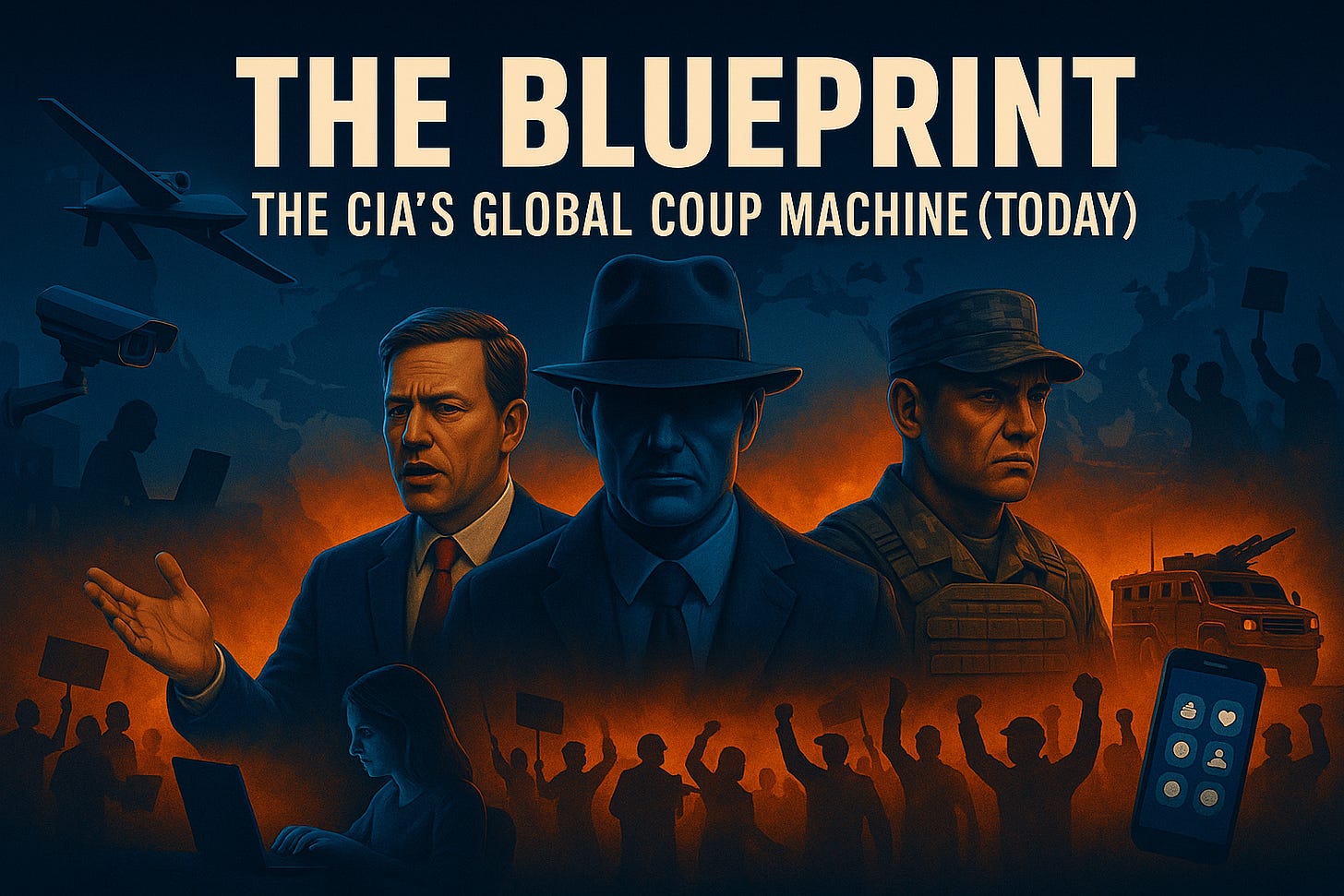


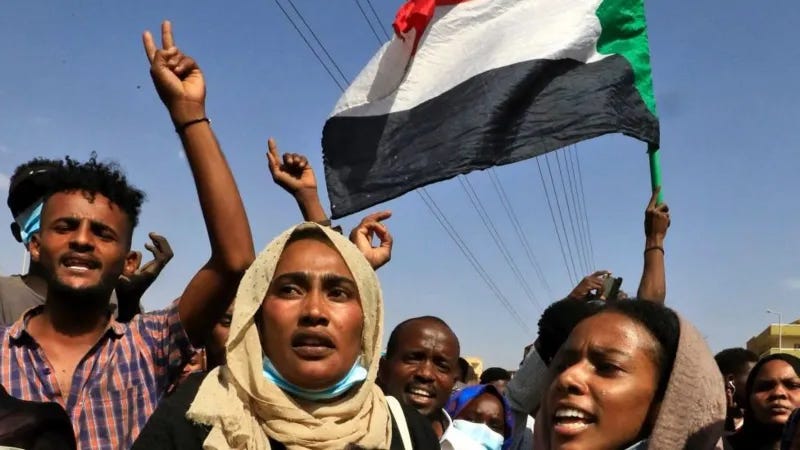

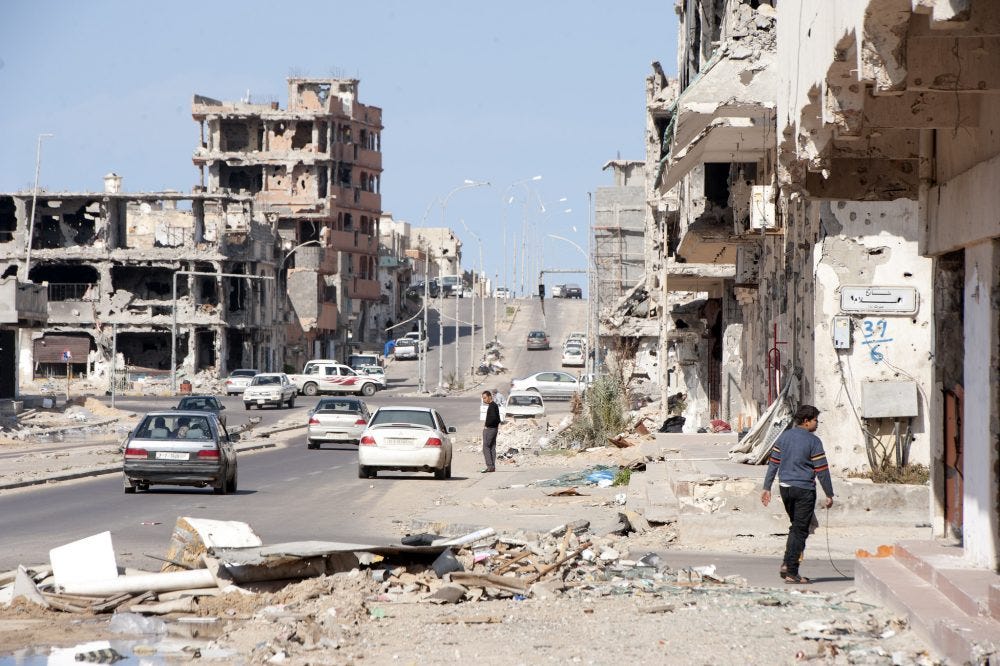

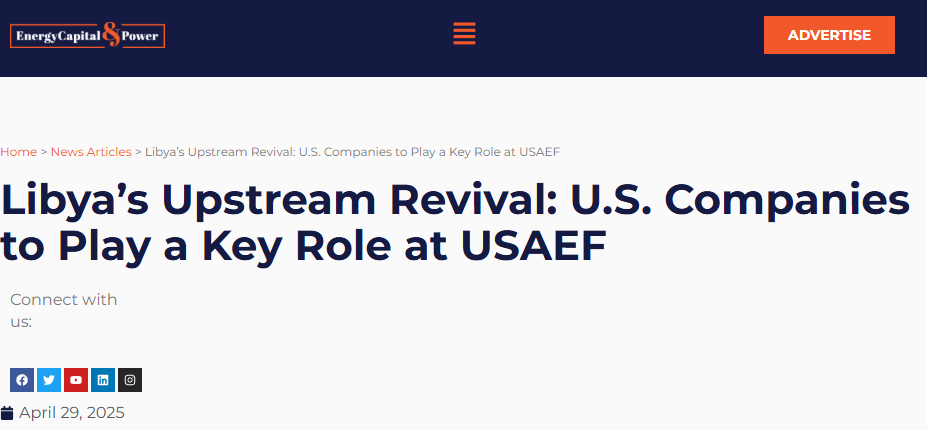
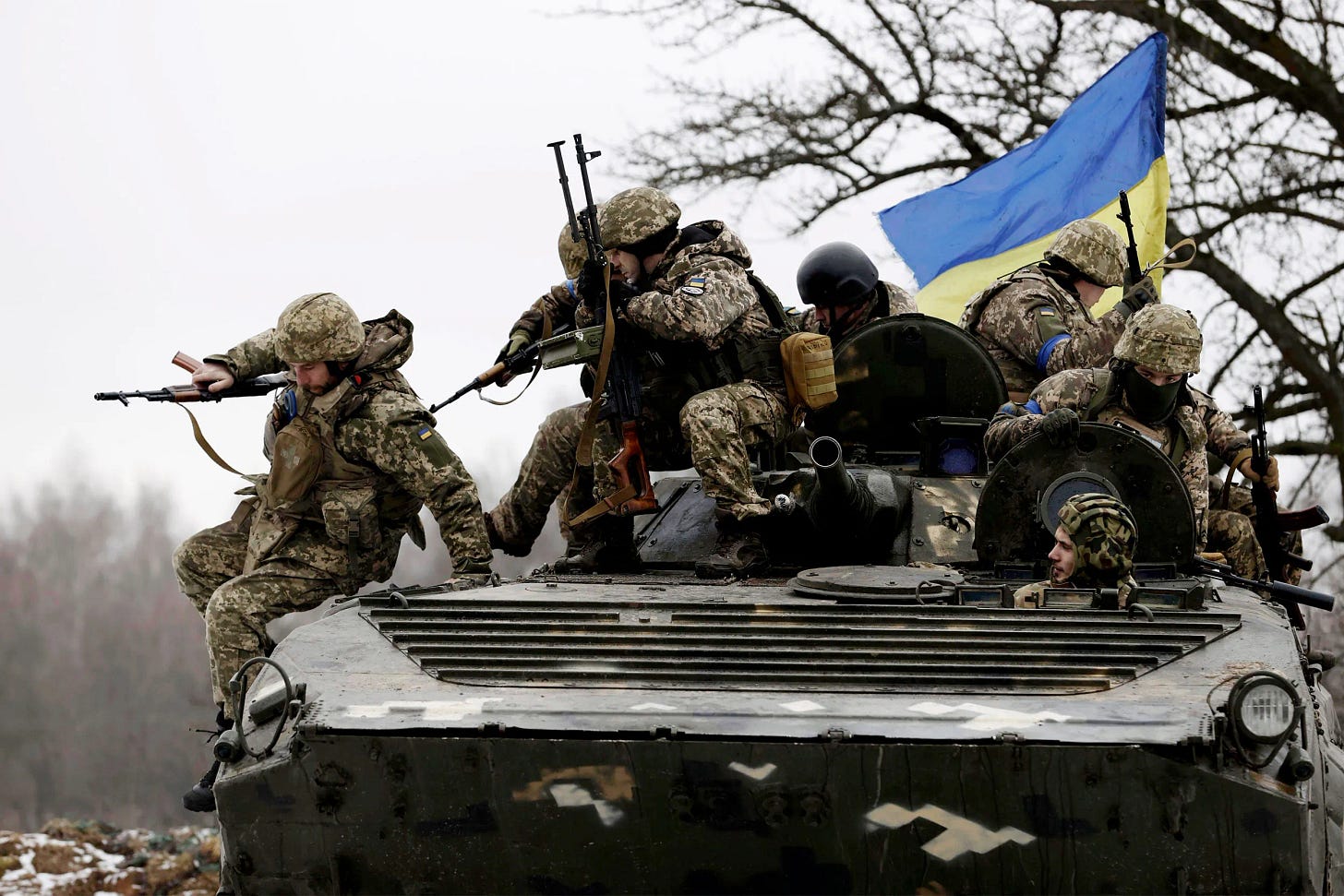

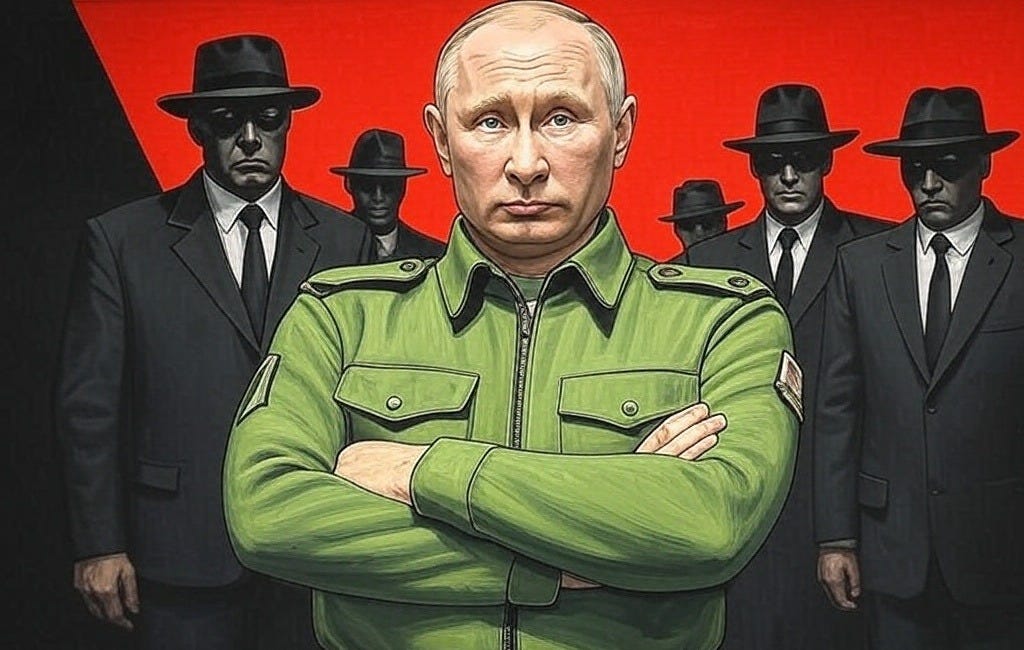
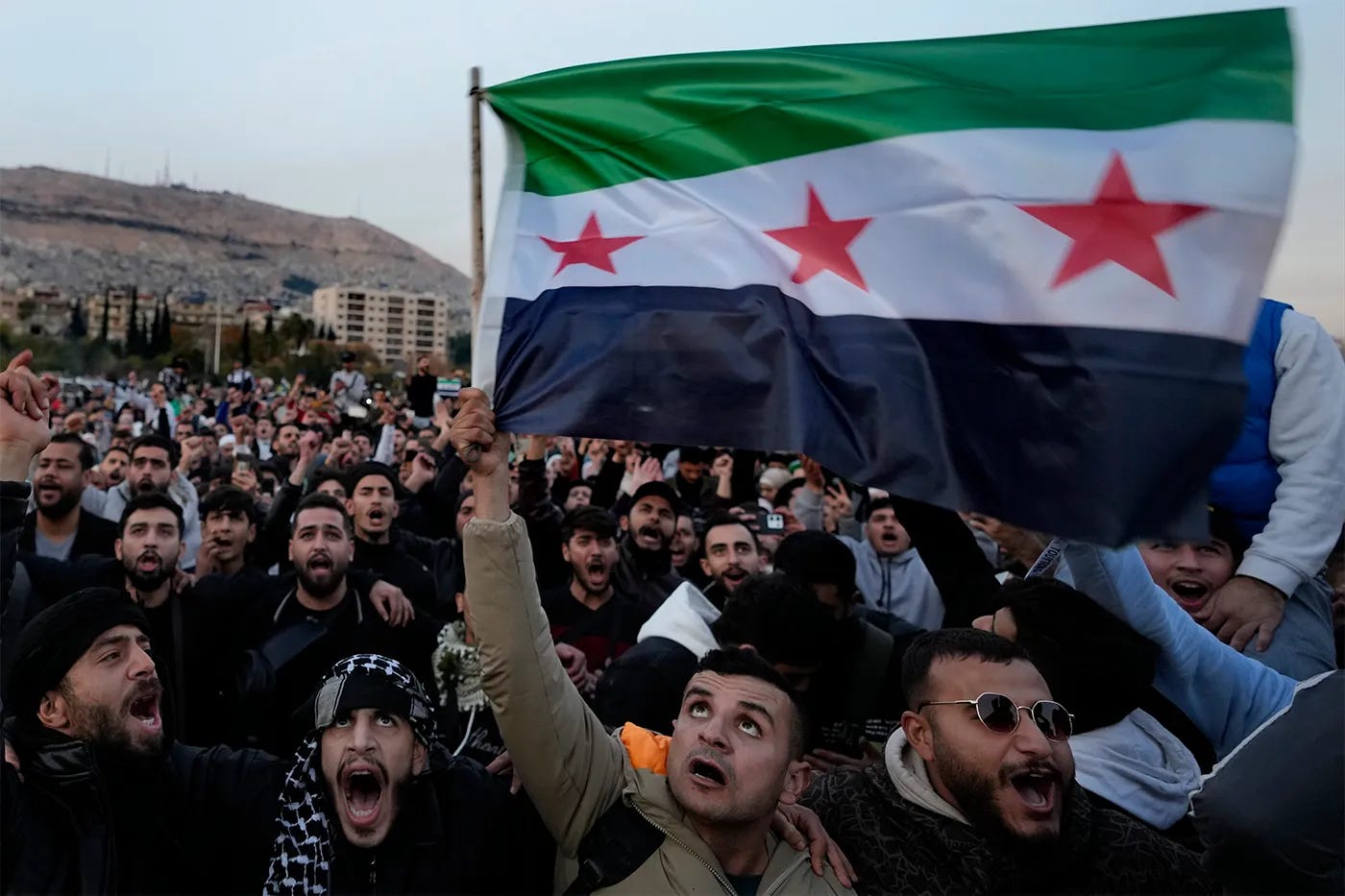

Related:
Fascinating very short interview w/ General Wesley Clark about how immediately after 9/11 he was told we were planning on invading 7 nations in 5 years (Iraq, Syria, Lebanon, Libya, Somalia, Sudan, Iran), with no explanation given as to why.
https://youtu.be/7ARtGrSrvCA